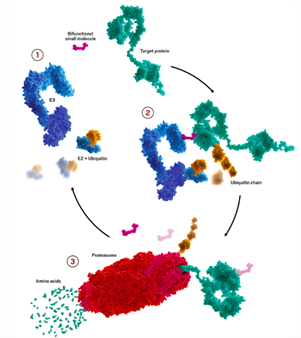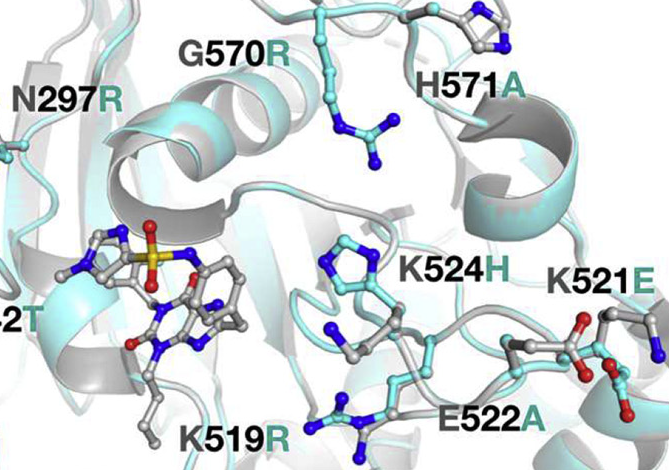This project is the result of a collaboration with the group of Dr. Carles Galdeano.
c-Myc degradation with PROTAC molecules
c-Myc is a key therapeutic oncogene that orchestrates a potent pro-cancer programme across multiple cellular pathways. Previous attempts to develop any clinically useful drug directly targeting it have been unsuccessful, partly because it is an Intrinsically Disordered Protein. Indeed, the disordered nature of unbound c-Myc has become an inherent challenge for standard structure-based drug development and novel drug modalities are needed to develop therapeutics directly affecting c-Myc activity.
Thus, the aim of this project is to prove that c-Myc, an undruggable transcriptor factor, can be degraded by using the PROTAC machinery with low binding affinity compounds.


